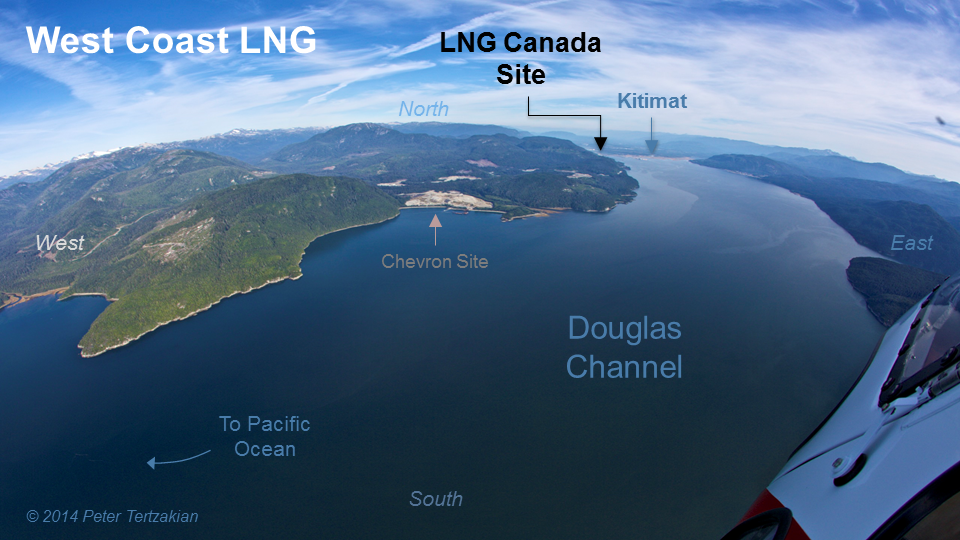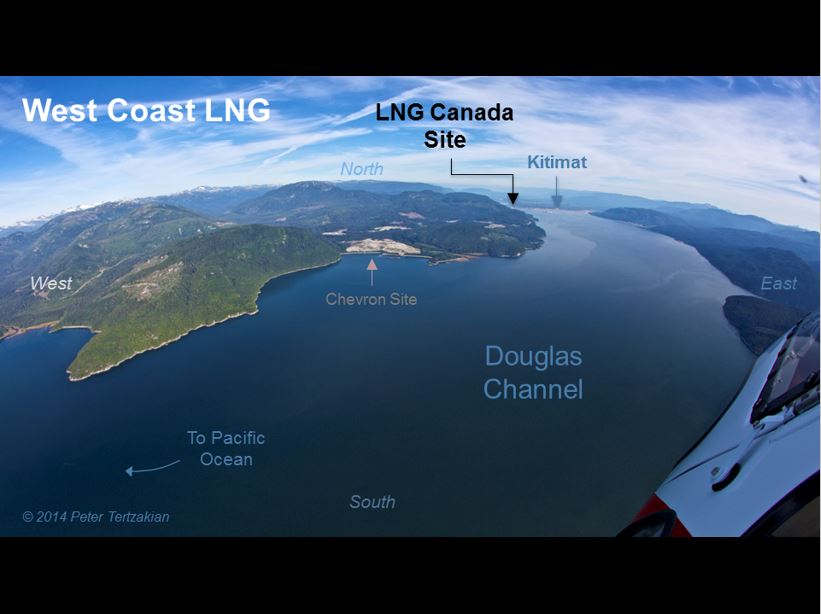LNG Canada: Getting Back to the Objective
If rumours are true, we’ll soon be hearing about the biggest infrastructure project in Canadian history.
The benefits of the Shell backed $C 40 billion LNG Canada project are pretty obvious: Jobs where they are needed, broad-based economic activity, greater taxes and royalties to government coffers, to name a few.
That’s all good. But I’m hoping there will be something else resulting from Canada’s first large-scale tidewater export facility for liquefied natural gas (LNG), or other hydrocarbons for that matter. Here’s a benefit that’s sorely needed in this country: A healthier dialog on what the Canadian resource industries can offer the world, especially in the pursuit of reducing global greenhouse gas (GHG) emissions.
Detractors of LNG exports are generally against fossil fuel infrastructure of any kind. Big mega-projects like LNG Canada are thought to be detrimental, because they are perceived to “lock in” fossil fuels. In other words, if we build the facility, it will linger in our carbonized energy arteries for decades.
Why are we debating yes-or-no to natural gas? In the highly-polarized debate about hydrocarbon investment, I often wonder: When did getting rid of fossil fuels, especially natural gas, become the primary objective at large?
I thought the primary global objective in the battle against climate change was to reduce GHG emissions as fast as possible.
Yet, reducing GHG emissions quickly is a far different pursuit than putting oil and gas out of business. The latter is much harder to do. So, let’s get back to the worthy and urgent objective of reducing global emissions.
Much of Asia has a coal problem. Not only can’t the populace breathe properly on bad days, but they realize that their emissions contribute to the ills of climate change. Governments know they need to clean it up as fast as possible and are using a combo of renewables, natural gas and energy efficiency to do it. Ipso facto, countries like China, Korea and others across the Pacific need natural gas from reliable sources like Canada. Why are we resistant to this?
Swapping out an old grubby coal plant with a modern, efficient, gas-fired power generator can cut CO2 emissions by 70%. Soot is eliminated too. Importantly, coal-to-natural-gas substitution can be done quickly at large scale. By my standards that’s a desirable “low-carbon” swap that contributes to climate change objectives, pronto. We don’t have time for the “just wait for the costs to come down” scenarios of large-scale, yet-to-be-proven, renewable and storage technologies. When the time for better alternatives comes, and they start being adopted, their entry will be welcomed.

The issue of “locking in” natural gas presumes that the Shell backed LNG facility (or any liquefied gas plant for that matter) is unassailable, that other technologies won’t come in at some point and mothball the project.
We live in a world where technology can quickly strand any asset, any time, including oil and gas plays, wind turbines and solar panels. The “lock in” argument has no merit.
In the future, it’s quite possible that LNG facilities become uncompetitive and yield prematurely to superior, cleaner energy technologies. But with today’s environmental priorities, all scalable alternatives to coal should be welcomed as immediate solutions to lowering emissions, while creating prosperity through investment.
Actually, I concede that LNG Canada will be around for a long time. Out of 100 plus facilities around the world, Shell’s state-of-the-art facility will be one of the last to be mothballed in the face of a superior substitute. That’s because the West Coast export terminal in Kitimat is being built as the lowest GHG emitting facility in the world, supplied by prolific, low-cost gas from Western Canada. From the gas wells in the field to the LNG tankers, the project’s GHG emissions will undercut the most efficient plant in the world—Snohvit in Norway—by 20 percent. [1] That’s an argument to build two or three more of these things; over the long term let’s put coal out of business as well as inferior LNG facilities in other countries.
LNG Canada has been over a decade in the making. When completed, their facility will show that Canadian LNG can create prosperity and hopefully renew a dialog that brings the objectives of climate change back to the urgent matter of reducing global GHG emissions now.
[1] Source: Shell using LNG Technology Competitor Benchmarking Tool. Upstream data from Wood Mackenzie, EIS and midstream data generated based on plant process and technology.


